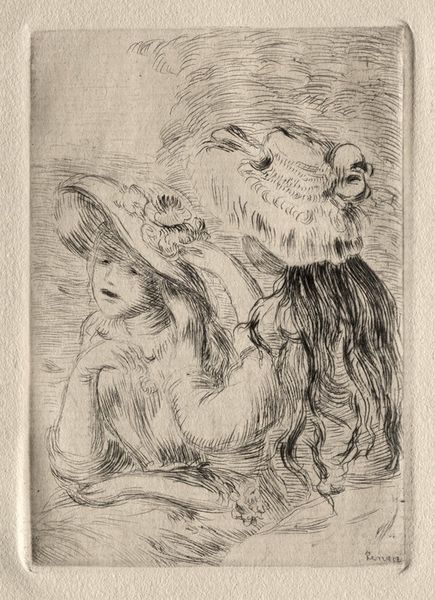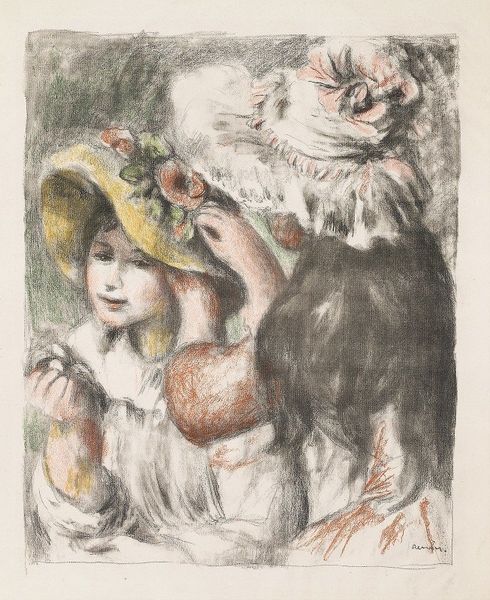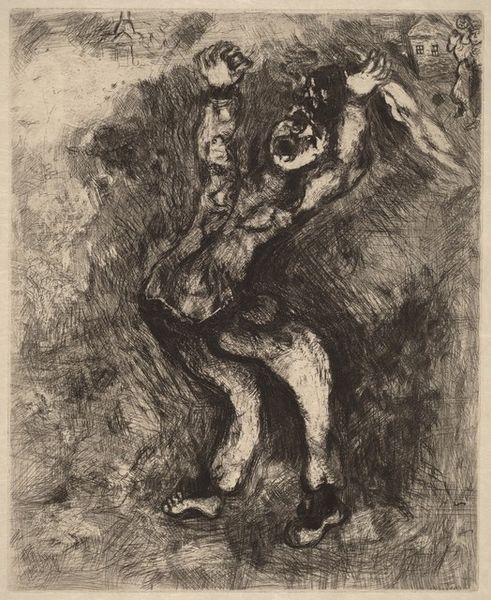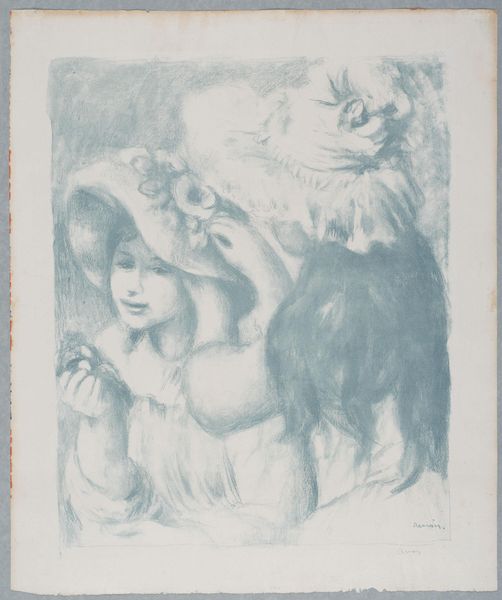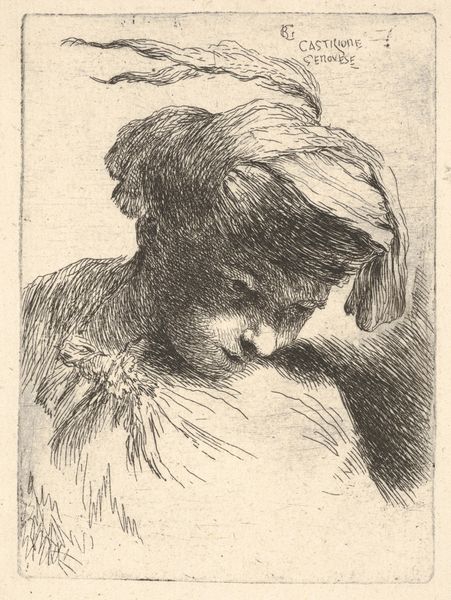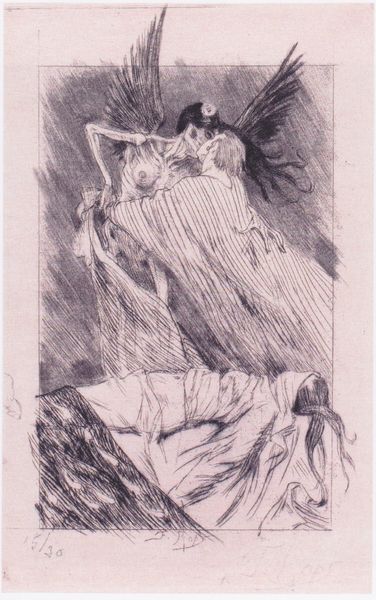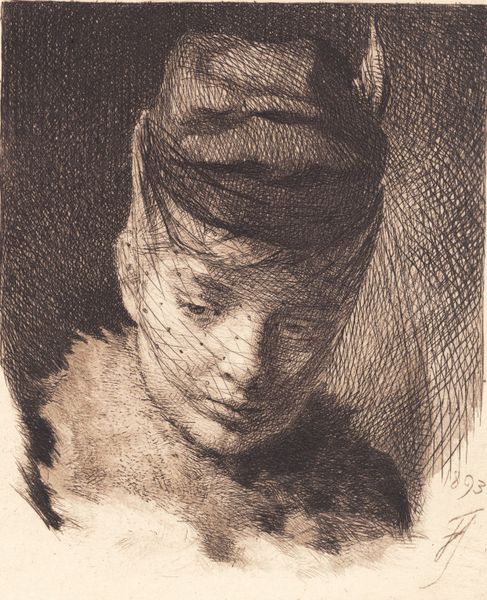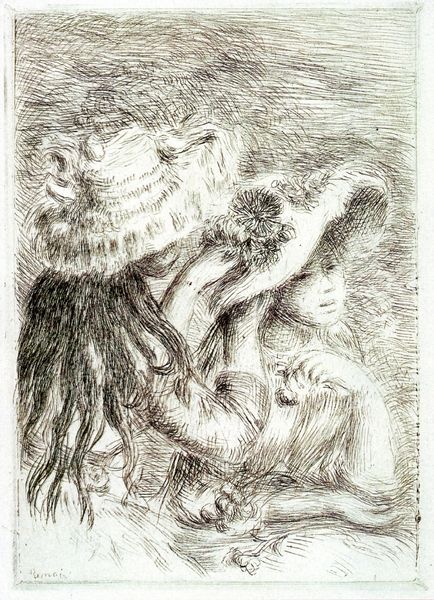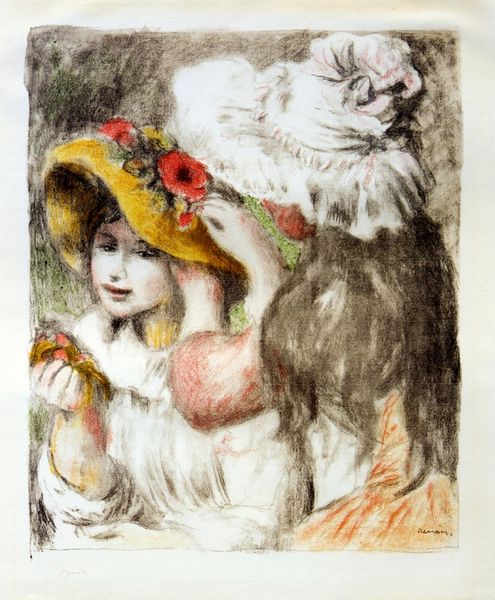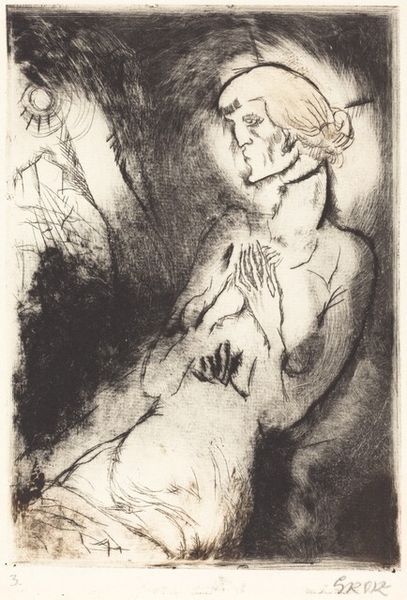
Dimensions: 23 x 19 1/4 in. (58.42 x 48.9 cm) (image)34 7/8 x 24 1/2 in. (88.58 x 62.23 cm) (sheet)38 1/2 x 30 3/8 x 1 5/8 in. (97.79 x 77.15 x 4.13 cm) (outer frame)
Copyright: No Copyright - United States
Editor: Here we have Pierre-Auguste Renoir's "The Hat Pin," a lithograph from 1897. The subject matter is a woman placing a hat upon another. The swirling lines and delicate rendering gives the whole piece an intimate and almost dreamlike feel. What do you see in this work from a historical perspective? Curator: It’s fascinating how Renoir uses this seemingly simple domestic scene to reflect the shifting roles and representations of women in Parisian society during the Belle Époque. The act of adorning oneself with elaborate hats, secured by a hat pin, wasn't just about fashion. Editor: Right. Curator: Think about it. These fashionable women are subjects and agents. These are markers of burgeoning consumer culture, a reflection of women's increasing participation in public life and visual culture. This image subtly challenges academic portrayals that traditionally depicted women as passive muses or allegorical figures. It places them in everyday, yet highly stylized context. Do you see how the "impressionistic" style and sketch medium challenges established forms? Editor: I see it now! Because the style captures a fleeting moment, the print itself is accessible, mirroring how women had greater independence during the time period to spend on clothes, style, leisure. Curator: Precisely. It’s a print; making it more accessible. Also consider the institution that holds it today. The Minneapolis Institute of Art acquires, preserves, and exhibits such works making it accessible to a wider public furthering discourse around impressionism. But it also further immortalizes these fleeting images in art history. How do you feel that influences our reading? Editor: Wow, that's a lot to think about! It's really made me see how much social context can be embedded in what seems like a simple image of women with a hat. It certainly puts a spin on thinking about it outside of purely aesthetics! Curator: Indeed! It serves as a reminder that art is not created in a vacuum, and that the politics of imagery extends beyond the canvas and to institutional power.
Comments
No comments
Be the first to comment and join the conversation on the ultimate creative platform.
